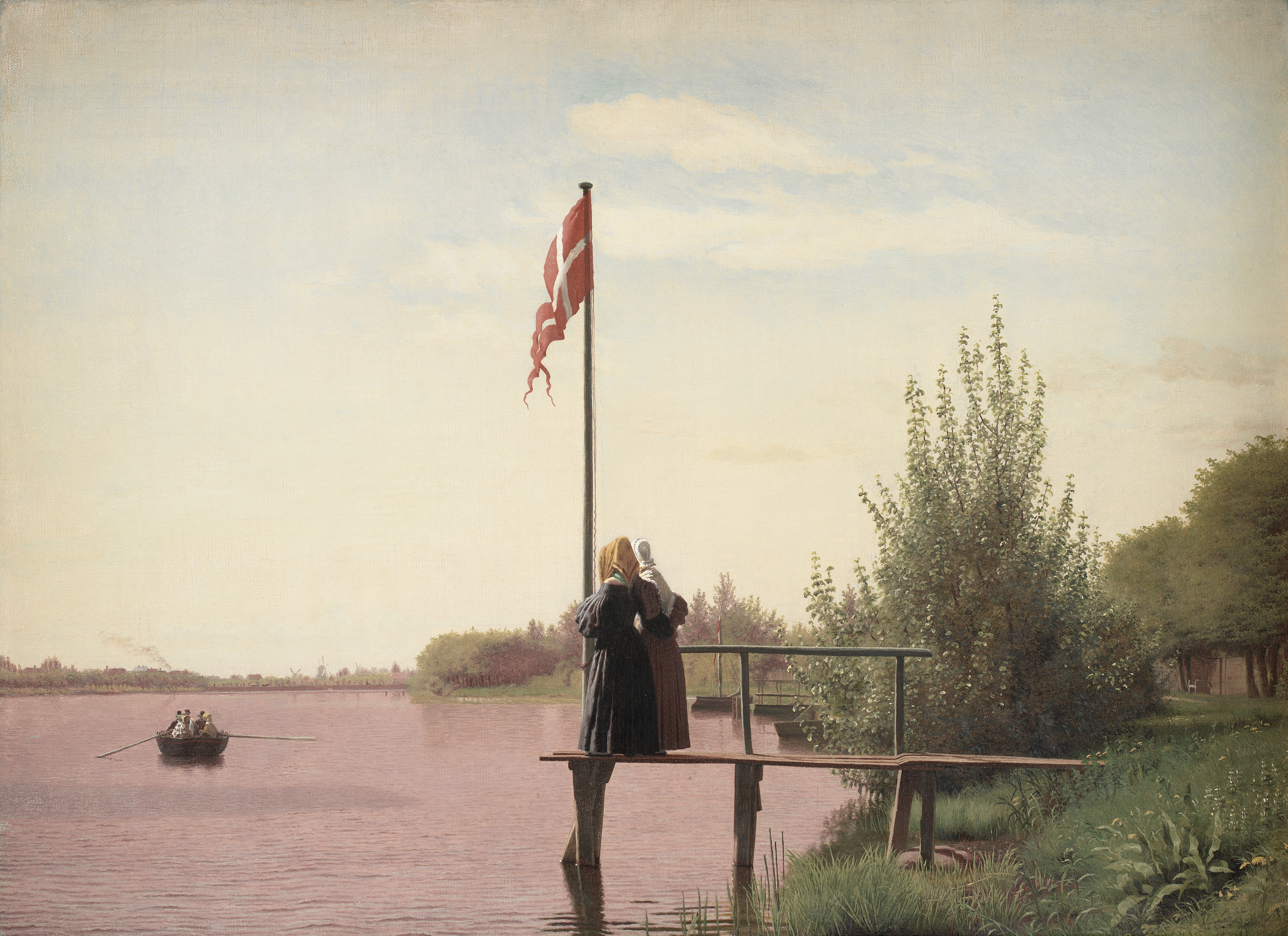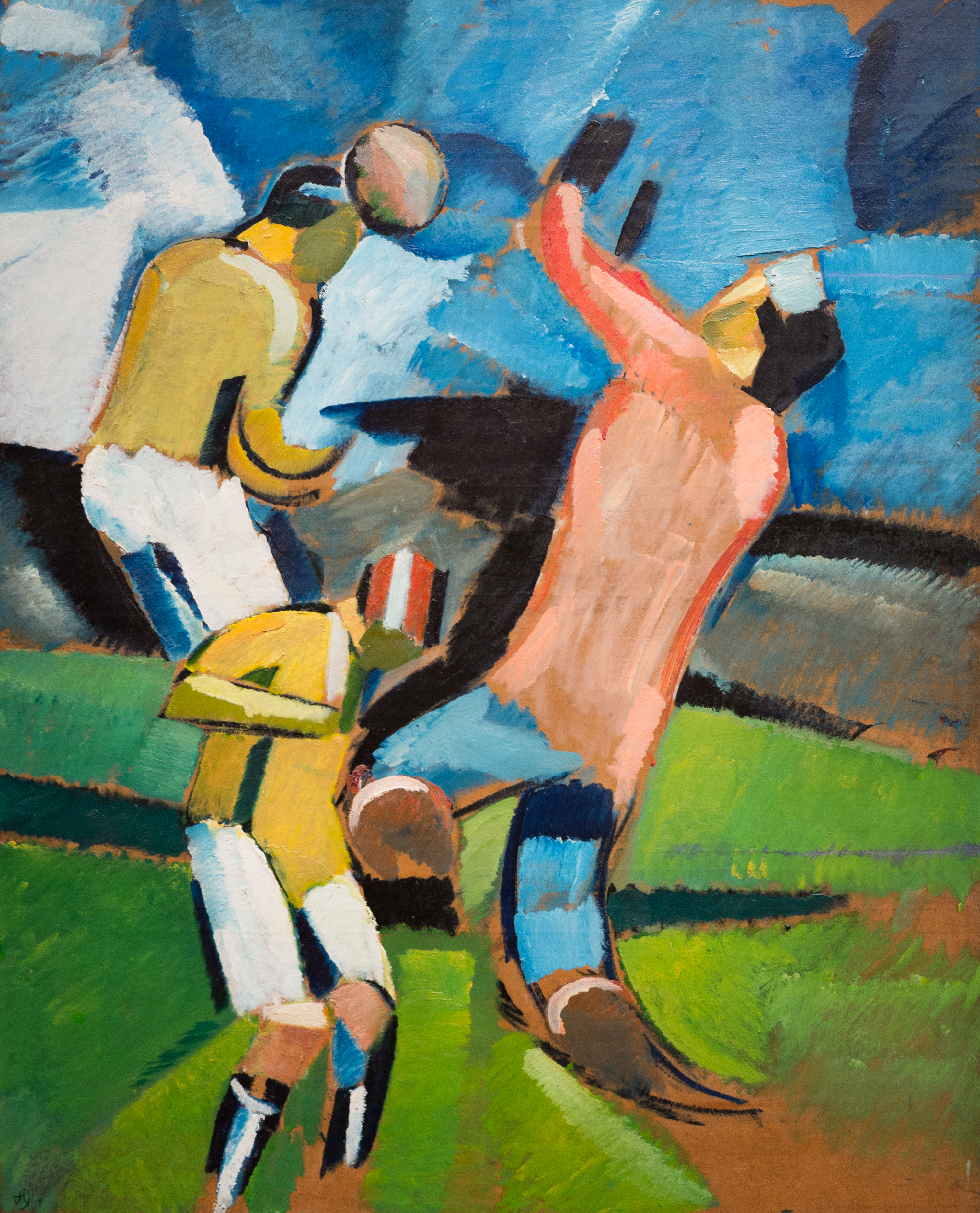|
Erik Hoppe
Erik Hoppe (1896–1968) was a Danish painter who is remembered for his paintings from the Copenhagen area, especially those with young ladies in the park at Valby. Hoppe also mastered the effects of light and colour. His earlier work is typified by greens and dull shades but later he produced compositions benefitting from bright sunlight. His style reflects the peculiarly Danish form of modernism, initially based on the sombre everyday-realism of around 1930. Affinities with the work of Edvard Weie and Harald Giersing can also be detected as his style developed to a lighter, less constrained approach. This tendency was soon to lead to the Grønningen movement which brought together painters of nature and everyday life. ... [...More Info...] [...Related Items...] OR: [Wikipedia] [Google] [Baidu] |
Art Of Denmark
Danish art is the visual arts produced in Denmark or by Danish artists. It goes back thousands of years with significant artifacts from the 2nd millennium BC, such as the Trundholm sun chariot. For many early periods, it is usually considered as part of the wider Nordic art of Scandinavia. Art from what is today Denmark forms part of the art of the Nordic Bronze Age, and then Norse art, Norse and Viking art. Danish medieval painting is almost entirely known from church frescos in Denmark, church frescos such as those from the 16th-century artist known as the Elmelunde Master. The Reformation greatly disrupted Danish artistic traditions, and left the existing body of painters and sculptors without large markets. The requirements of the court and aristocracy were mainly for portraits, usually by imported artists, and it was not until the 18th century that large numbers of Danes were trained in contemporary styles. For an extended period of time thereafter art in Denmark either ... [...More Info...] [...Related Items...] OR: [Wikipedia] [Google] [Baidu] |
Copenhagen
Copenhagen ( or .; da, København ) is the capital and most populous city of Denmark, with a proper population of around 815.000 in the last quarter of 2022; and some 1.370,000 in the urban area; and the wider Copenhagen metropolitan area has 2,057,142 people. Copenhagen is on the islands of Zealand and Amager, separated from Malmö, Sweden, by the Øresund strait. The Øresund Bridge connects the two cities by rail and road. Originally a Viking fishing village established in the 10th century in the vicinity of what is now Gammel Strand, Copenhagen became the capital of Denmark in the early 15th century. Beginning in the 17th century, it consolidated its position as a regional centre of power with its institutions, defences, and armed forces. During the Renaissance the city served as the de facto capital of the Kalmar Union, being the seat of monarchy, governing the majority of the present day Nordic region in a personal union with Sweden and Norway ruled by the Danis ... [...More Info...] [...Related Items...] OR: [Wikipedia] [Google] [Baidu] |
Valby
Valby () is one of the 10 official districts of Copenhagen, Denmark. It is in the southwestern corner of Copenhagen Municipality, and has a mixture of different types of housing. This includes apartment blocks, terraced housing, areas with single-family houses and allotments, plus the remaining part of the old Valby village, around which the district has formed, intermingled with past and present industrial sites. Valby Hill marks the boundary between Valby and the more central and urban neighbouring Vesterbro district. The expression "west of Valby Hill" is in Danish often used as a metonym for "the provinces" or "outside Copenhagen". Separated from the rest of Copenhagen by Vestre Cemetery, Denmark's largest cemetery, towards Vesterbro/Kongens Enghave and Søndermarken-Frederiksberg Gardens towards Frederiksberg, the Carlsberg brewery site, and areas of low density, Valby retains a certain air of 'independence', or isolation, even today. With the progressing redevelopment o ... [...More Info...] [...Related Items...] OR: [Wikipedia] [Google] [Baidu] |
Modernism
Modernism is both a philosophy, philosophical and arts movement that arose from broad transformations in Western world, Western society during the late 19th and early 20th centuries. The movement reflected a desire for the creation of new forms of art, philosophy, and social organization which reflected the newly emerging industrial society, industrial world, including features such as urbanization, architecture, new technologies, and war. Artists attempted to depart from traditional forms of art, which they considered outdated or obsolete. The poet Ezra Pound's 1934 injunction to "Make it New" was the touchstone of the movement's approach. Modernist innovations included abstract art, the stream-of-consciousness novel, montage (filmmaking), montage cinema, atonal and twelve-tone music, divisionist painting and modern architecture. Modernism explicitly rejected the ideology of Realism (arts), realism and made use of the works of the past by the employment of reprise, incorpor ... [...More Info...] [...Related Items...] OR: [Wikipedia] [Google] [Baidu] |
Edvard Weie
Viggo Thorvald Edvard Weie (18 November 1879 - 9 April 1943) was a Danish Modernist painter. He was a recipient of Eckersberg Medal in 1925. He died during 1943 in Frederiksberg. Biography Weie was born in Copenhagen, Denmark. His father went away when Edvard was still very young and left his family in poverty. To help out, he would deliver newspapers every morning before school and later worked as a house painter. Despite the hardship, he was able to take art lessons. When he came of age, he went to Copenhagen to apply for admission to the Royal Danish Academy of Fine Arts, but was not accepted. Hanne AbildgaardArtist: Edvard WeieKunstindeks Danmark & Weilbach Kunstnerleksikon It was not until 1905, when he was already twenty-five years old, that he was able to enter the Kunstnernes Frie Studieskoler, operated by Kristian Zahrtmann (1843–1917). It was there that he was introduced to modern art. He became a favored student and accompanied Zahrtmann on a trip to Italy in 190 ... [...More Info...] [...Related Items...] OR: [Wikipedia] [Google] [Baidu] |
Harald Giersing
Harald Giersing (24 April 1881 – 15 January 1927) was a Danish painter. He was instrumental in developing the classic modernism movement in Denmark around 1910-1920. He is remembered as one of Denmark's most important 20th-century artists both for his portraits and landscapes. Life and development Giersing, who died at the early age of 45, was driven by a desire to concentrate on change and beauty. Unable to find support in religion, he adopted modernism as an existential approach as to how art could fill the void for those without faith in God. While some synergies with the work of Vilhelm Lundstrøm can be detected, he differed from contemporaries such as Niels Larsen Stevns, Sigurd Swane and Edvard Weie in that he sought to represent images just as he had seen them, almost in the form of photographs. [...More Info...] [...Related Items...] OR: [Wikipedia] [Google] [Baidu] |
Grønningen
Grønningen is a Danish artists cooperative whose members arrange exhibitions and similar events. Founded in 1915, it is one of the oldest and most important groupings of its kind in Denmark and currently has 54 members. It is named after the street Grønningen in Copenhagen where the first art exhibition was held. Initially, it brought together artists interested in radical and experimental art who had been members of Den Frie Udstilling ("The Free Exhibition"). Most prominent in the early years were artists such as Harald Giersing, Sigurd Swane, Olaf Rude, William Scharff, Fritz Syberg and Johannes Larsen. They were soon joined by Vilhelm Lundstrøm, Svend Johansen, Axel Salto, Jens Søndergaard, Niels Lergaard, Erik Hoppe, Christine Swane, Astrid Noack and Gottfred Eickhoff. Later came Erik Werner, Eiler Krag, Ib Spang Olsen, Lars Bo and Bo Bojesen. During the 1940s, abstract art was introduced by Richard Mortensen and Egill Jacobsen. The annual exhibitions are now held ... [...More Info...] [...Related Items...] OR: [Wikipedia] [Google] [Baidu] |
Asger Jorn
Asger Oluf Jorn (3 March 1914 – 1 May 1973) was a Danish painter, sculptor, ceramic artist, and author. He was a founding member of the avant-garde movement COBRA and the Situationist International. He was born in Vejrum, in the northwest corner of Jutland, Denmark, and baptized Asger Oluf Jørgensen. The largest collection of Jorn's works—including his major work ''Stalingrad''—can be seen in the Museum Jorn, Silkeborg, Denmark. Jorn willed his property and the works of art located inside to the Municipality of Albissola Marina (Savona), so the Italian museum called "Casa Museo Jorn" was created for displaying his works. Early life He was the second oldest of six children, an elder brother to Jørgen Nash. Both of his parents were teachers. His father, Lars Peter Jørgensen, a fundamentalist Christian, died in a car crash when Asger was 12 years old. His mother, Maren, ''née'' Nielsen, was more liberal but nevertheless a deeply committed Christian. This early heavy ... [...More Info...] [...Related Items...] OR: [Wikipedia] [Google] [Baidu] |
Per Kirkeby
Per Kirkeby (1 September 1938 – 9 May 2018) was a Danish painter, poet, film maker and sculptor. Biography By the time Kirkeby completed a masters degree in arctic geology at the University of Copenhagen in 1964, he was already part of the important experimental art school " eks-skolen." His interest in geology and other aspects of the natural world was fundamental to and characteristic of his art. Kirkeby worked as a painter, sculptor, writer, and printmaker. Kirkeby taught as a professor at the Karlsruhe Institute of Technology (1978–89) and at Städelschule in Frankfurt am Main (1989–2000). Per Kirkeby was a member of the Danish Academy from 1982. In 1997 he became a Knight of the Order of the Dannebrog. His works have been exhibited worldwide and are represented in many important public collections, e.g. Tate, London; Metropolitan Museum of Art, New York; Museum of Modern Art, New York, Centre Pompidou, Paris. Personal life From 1979 until 2002, Per Kirkeby was ... [...More Info...] [...Related Items...] OR: [Wikipedia] [Google] [Baidu] |
1896 Births
Events January–March * January 2 – The Jameson Raid comes to an end, as Jameson surrenders to the Boers. * January 4 – Utah is admitted as the 45th U.S. state. * January 5 – An Austrian newspaper reports that Wilhelm Röntgen has discovered a type of radiation (later known as X-rays). * January 6 – Cecil Rhodes is forced to resign as Prime Minister of the Cape of Good Hope, for his involvement in the Jameson Raid. * January 7 – American culinary expert Fannie Farmer publishes her first cookbook. * January 12 – H. L. Smith takes the first X-ray photograph. * January 17 – Fourth Anglo-Ashanti War: British redcoats enter the Ashanti capital, Kumasi, and Asantehene Agyeman Prempeh I is deposed. * January 18 – The X-ray machine is exhibited for the first time. * January 28 – Walter Arnold, of East Peckham, Kent, England, is fined 1 shilling for speeding at (exceeding the contemporary speed limit of , the first spee ... [...More Info...] [...Related Items...] OR: [Wikipedia] [Google] [Baidu] |
1968 Deaths
The year was highlighted by protests and other unrests that occurred worldwide. Events January–February * January 5 – " Prague Spring": Alexander Dubček is chosen as leader of the Communist Party of Czechoslovakia. * January 10 – John Gorton is sworn in as 19th Prime Minister of Australia, taking over from John McEwen after being elected leader of the Liberal Party the previous day, following the disappearance of Harold Holt. Gorton becomes the only Senator to become Prime Minister, though he immediately transfers to the House of Representatives through the 1968 Higgins by-election in Holt's vacant seat. * January 15 – The 1968 Belice earthquake in Sicily kills 380 and injures around 1,000. * January 21 ** Vietnam War: Battle of Khe Sanh – One of the most publicized and controversial battles of the war begins, ending on April 8. ** 1968 Thule Air Base B-52 crash: A U.S. B-52 Stratofortress crashes in Greenland, discharging 4 nuclear bombs. * ... [...More Info...] [...Related Items...] OR: [Wikipedia] [Google] [Baidu] |






.jpg)
